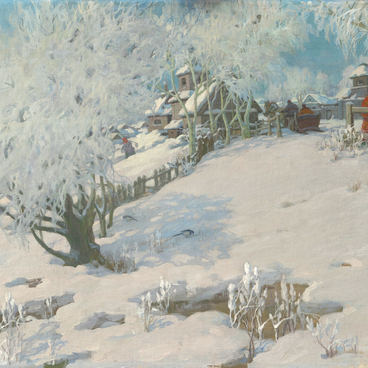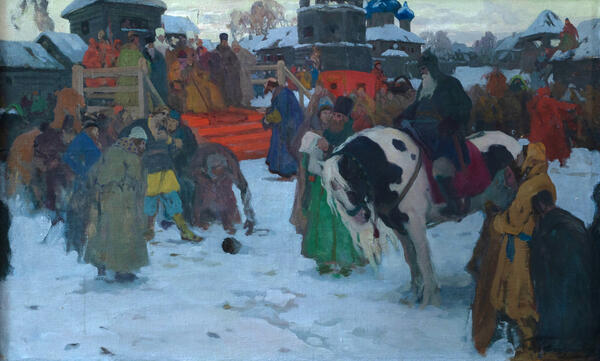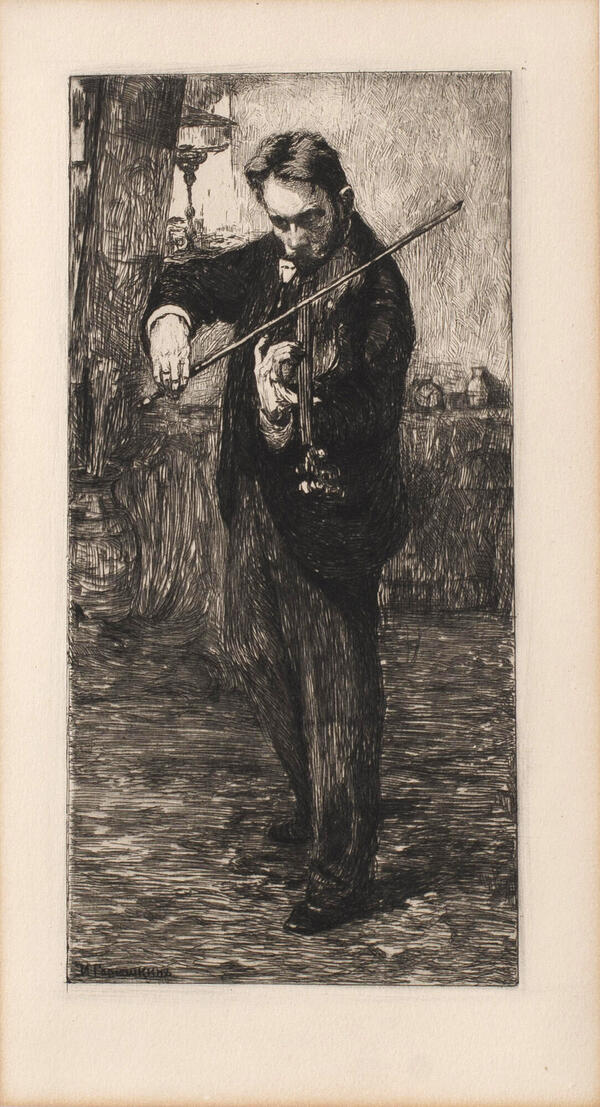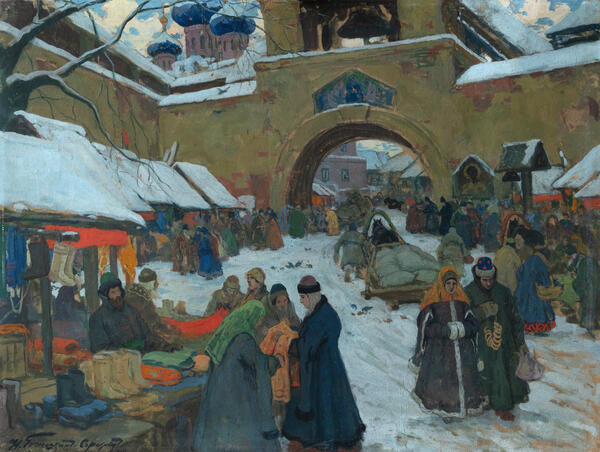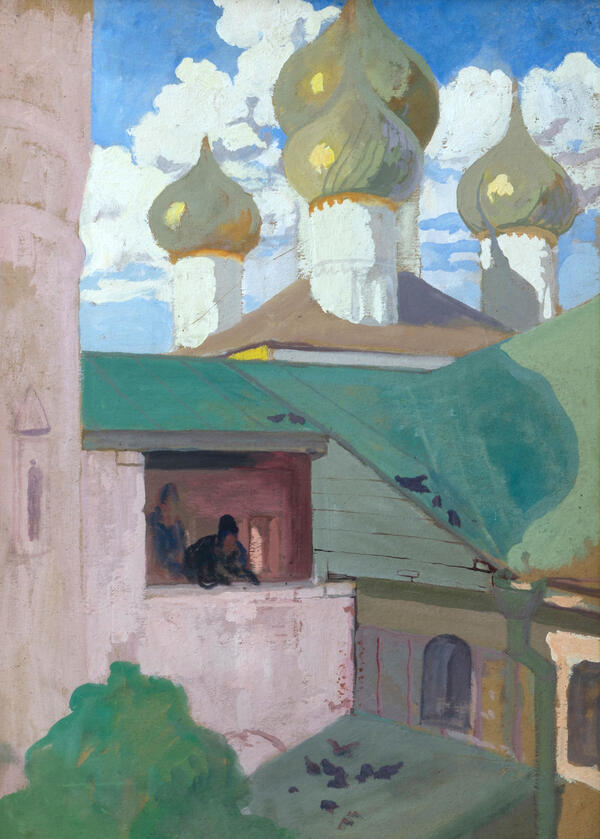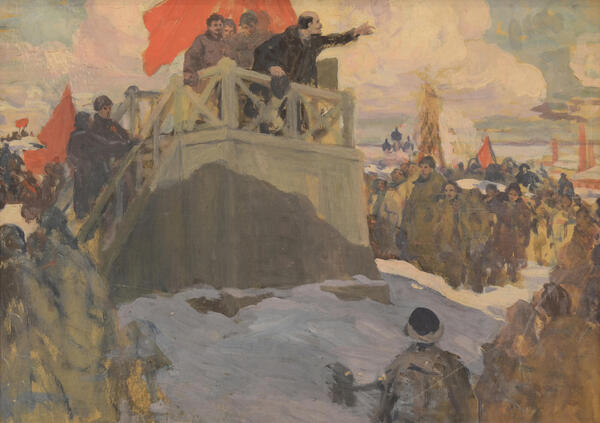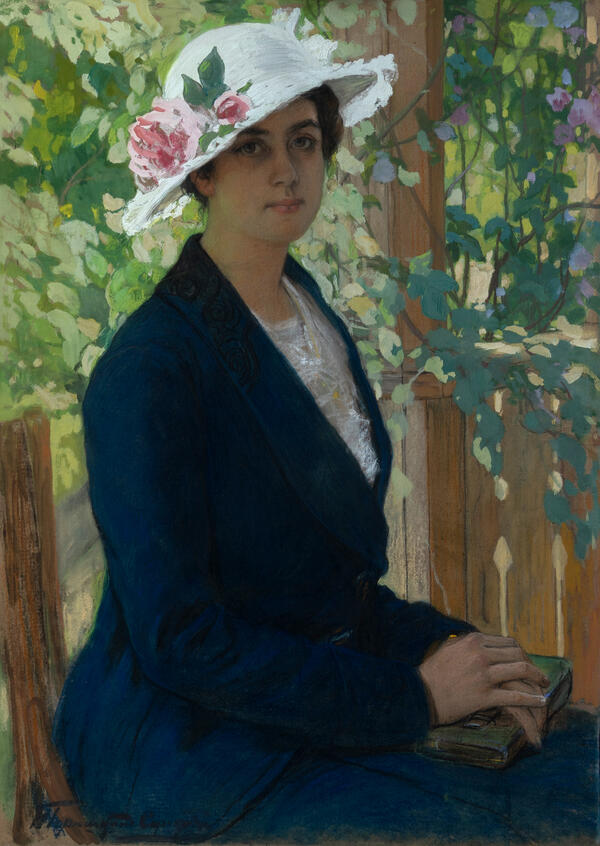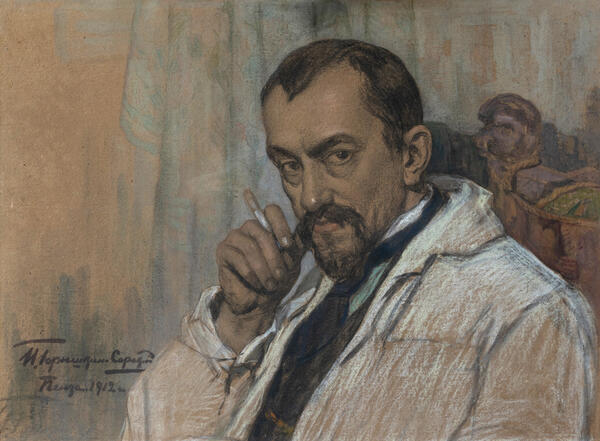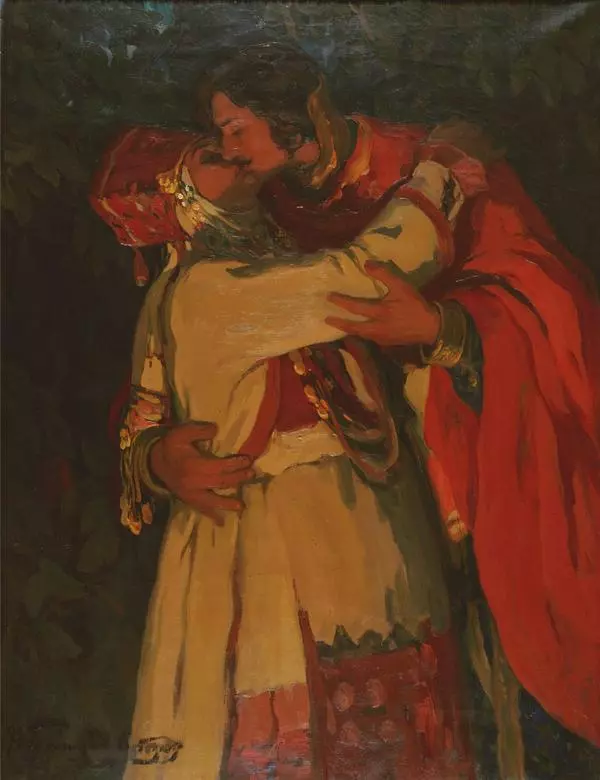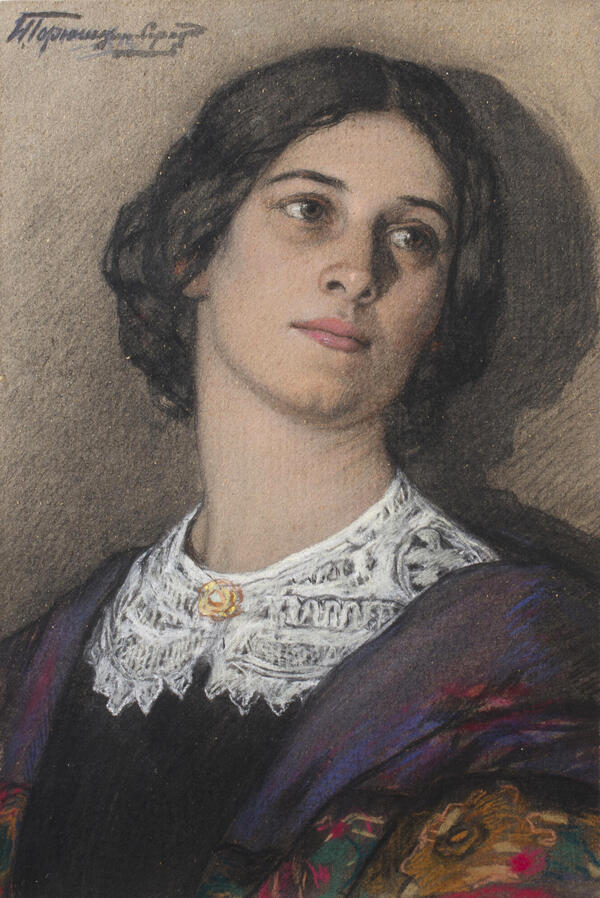The socialist revolution prompted the already elderly Ivan Silych Goryushkin-Sorokopudov to aesthetically reassess the events that had unfolded. The artist, always engaged with contemporary issues, skillfully conveyed modernity through the lens of history and allegory. As the tumultuous events in the country transcended the boundaries of traditional historical or everyday genres, he actively sought new means to express these emerging themes.
Evidence of the artist’s creative explorations can be seen in the numerous sketches that feature unusual compositional solutions. In the sketch titled “Revolution”, Ivan Silych Goryushkin-Sorokopudov depicts a snow-covered plain along which columns of demonstrators carrying red flags march from factories and plants. A worker, depicted next to a sculpture of a Sphinx, delivers a passionate speech to the crowd, with a large open book lying at his feet.
The painting is rich in symbolism, with Ivan Silych Goryushkin-Sorokopudov employing the image of the Sphinx to highlight the incomprehensible and supernatural scale of the events unfolding around him. This approach to symbolism was also evident in the works of his contemporaries, such as Boris Mikhailovich Kustodiev’s “The Bolshevik” and Konstantin Fyodorovich Yuon’s “New Planet”.
Through the use of allegory, Ivan Goryushkin-Sorokopudov aimed to convey the joyful movement of the masses toward freedom and knowledge. Symbolism characterized the art of the early revolutionary years, as many artists endeavored to express the scale of events using the language of symbols. The revolution itself can be envisioned as the Sphinx, which, according to legend, posed riddles and punished those who could not answer. In this context, the Sphinx symbolizes the power and strength that the people united by the revolution embodied.
Revolutionary subjects always captivated Ivan Silych Goryushkin-Sorokupudov. Even in the early stages of his career, he explored such motifs in his sketches and drafts, responding passionately to the events of the Russian Revolution of 1905. In 1906, he contributed to the publication of the revolutionary magazine “Gamayun”, where a graphic work of his depicting a murdered man against a backdrop of barricades and a red banner appeared in the only issue.
